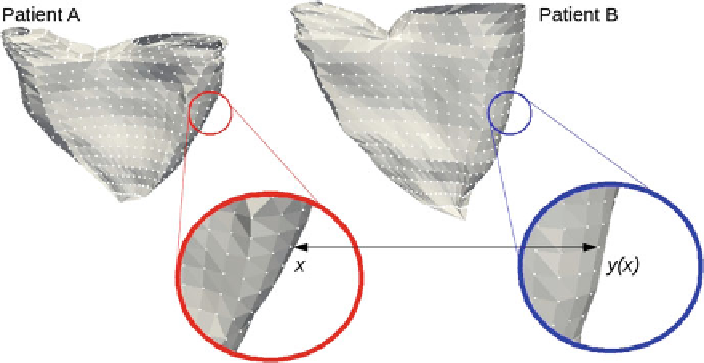Biomedical Engineering Reference
In-Depth Information
Fig. 5.2
Surface correspondences. Using landmark-based methods to register one surface mesh to
another surface mesh, for each point
x
in patient
A
, we require the corresponding point
y
(
x
)
in
patient
B
. This requires a full parameterization of the patient surface meshes. This is illustrated on
the right ventricle of two patients with rToF
and orientation) normalization and the consistent identification of landmarks within
all patients (Fig.
5.2
), a principle component analysis (PCA) is performed to extract
the main modes of variation of the shape.
5.2.1.1
Shapes
In such a process, the global pose of our objects is often considered as a nuisance
factor related to the arbitrary coordinate system of the acquisition device: generally
speaking, the shape of an object is understood as the geometric information that is
invariant under translation, rotations and rescaling. Thus, one is often interested
only in the
shape
, i.e. what remains if we quotient out the object space by a
group action, usually rigid body, similarity or affine transformations. For instance,
when we consider the equivalent classes of sets of
N
(labeled or unlabeled) points
under the action of a global similarity (resp. rigid body) transformation, we obtain
the celebrated shape (resp. size and shape) spaces of Kendall et al. [
12
,
13
].
One can define similarly the shape spaces of curves by removing the effect of
re-parameterizations and the global pose of the curve [
29
-
31
,
40
]. However, in
medical image analysis, the natural coordinate system of an organ is its position
and orientation with respect to surrounding tissues and organs in the image. Thus,
once images are normalized by aligning them to a reference anatomy, the pose of
organs is a variable of interest and should be kept for analysis.

Search WWH ::

Custom Search